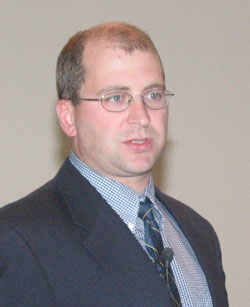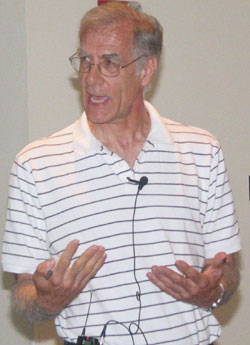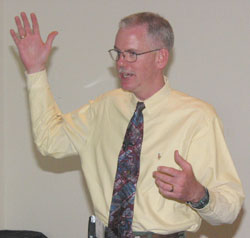
Duane Wulf, an animal scientist from South Dakota State University (SDSU), discusses the effect of muscling on beef carcass value during the live animal, carcass and end point roundtable discussion May 26 at the 2004 BIF research symposium in Sioux Falls, S.D. Wulf reviewed size, quality and cutability and their effects on carcass value. Yield grades and their relationship to fat thickness and ribeye area were also discussed. Citing research conducted at SDSU, Wulf said a 13.8-sq.-in. ribeye — at a 775-lb. carcass weight — is optimum for the retail market. During his presentation, he also discussed the implications of the increasing trend of injecting meat with additives for flavor. “Marinated meat, enhanced meat, injected meat — it all removes a lot of variability in quality and substantially improves it,” Wulf said. “There are things on the horizon that will improve it even greater than this. It’s just in its infant stages.”

